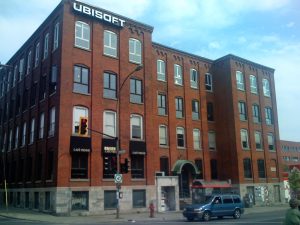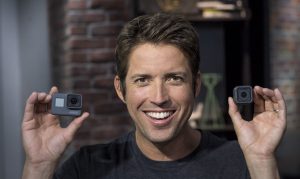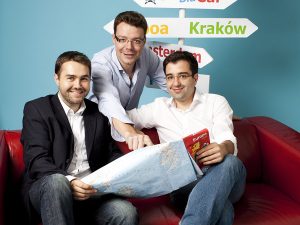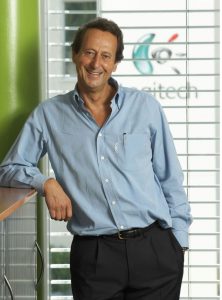Linus Torvalds : The Creator & the Principal Developer of the Linux Kernel
Necessity is the key to invention, and the story of Linus Torvalds is the greatest proof to that. A student and an enthusiast programmer from Helsinki University started working on his own Operating System when he was unable to buy a basic UNIX system that costed around US$5,000 at that time. Although it was a modest effort of improving the small clone of UNIX, his creativity and curiosity led him to build a whole new and free OS software, Linux, which accidentally became an alternative to the Microsoft monopoly.
Early Life
Linus Torvalds was born on 28 December 1969 in Helsinki, Finland. His father Nils Torvalds and mother Anna Torvalds, both worked as journalists. His parents named him after the Nobel Prize-winning American chemist, Linus Pauling. Torvalds was 11 years old when he got familiar with computers and the BASIC programming language. This was the time when he grew an interest in computers and coding. Soon, he was able to write codes for his own assembler and editor, as Finland was not a place where software were easily available. Later, he also developed a few games, including the clone of Pac Man, naming it the Cool Man.
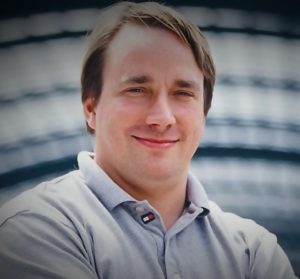
Torvalds joined the University of Helsinki in 1988, where he studied Computer Science as his majors. But within the first year of his college, he joined the Finnish Army Uusimaa brigade and completed the 11-month officer training program, as the Second Lieutenant, under the mandatory military service of Finland.
After completing the military training, Torvalds came back to his home town, to resume his college. While in college, he got introduced to Unix for the first time. At the same time, he also started studying a book named ‘Operating Systems: Design and Implementation’, written by the computer science professor Andrew Tanenbaum, which described the educational stripped-down version of Unix, ‘MINIX’.
Founding Linux
In 1991, he bought the Intel 80386-based clone of IBM PC, having a 33MHz Intel 386 processor and a huge 4MB of memory. The system came with the MS-DOS operating system, that according to Torvalds did not do justice with the 386 Intel Processor. As he was already working on UNIX in the college, he was not much comfortable with working on MS-DOS but getting a UNIX copy too expensive. This led him to the other alternative for the OS, and he ordered a copy of MINIX for his system.
MINIX was faster than MS-DOS but still had some flaws. So he decided to make some changes to MINIX in order to improve the OS. To work on the idea, even before receiving his MINIX copy, he went into the depth of Unix and studied books covering all the aspects of the development phase. He started with writing a small piece of code that could improve MINIX. This also became the M.Sc. thesis project for Torvalds, and he titled the project as ‘Linux: A Portable Operating System.’
On Aug. 25, he posted to the internet’s Minix newsgroup, saying, “Hello everybody out there using MINIX – I’m doing a (free) operating system (just a hobby, won’t be big and professional like GNU) for 386 (486) AT clones. I’d like any feedback on things people like/dislike in MINIX, as my OS resembles it somewhat.”
Eventually, with great hard work, Torvalds managed to release the first version of the OS, i.e. 1.0, on September 17, followed by the second version, i.e. 2.0, on October 5, in the same year. The second version OS was a text-based user interface and was officially named as Linux. Torvalds put the 0.2 version over FTP and used Stallman’s GNU General Public License version 2 (GPLv2) for his Linux kernel so that other developers could use it and modify it for further improvements.
Developers from across the world also became curious about Linux, started working on the same, resulting in rapid improvements to the platform. Even being a student at Helsinki University, Torvalds was doing really well. The college authorities appointed him as an instructor at the University, which helped him continue his development work for Linux.
By 1996, people started using Linux on their systems, and by 1997, Linux was installed on over three million computers. Organisations like NASA, Dell and IBM were also using Linux. At the same time, Red Hat started building software based on Linux, that boosted the popularity of Linux even more.
In 1999, when Red Hat went public, the company presented Torvalds with stock options in gratitude for his creation, making him an overnight millionaire. Also, when IBM started its research work on Linux in 2001, to support this free software, a few other companies also stepped in to do the same.
Today, Linux is serving those people, who need to use a computer, but cannot and does do not want to spend a huge amount on the other operating systems. According to Torvalds, he started working on Linux for fun, and it is also a fact that for almost a decade, he was working on it for free. Linux, certainly, is the result of his dedication and brilliance.
Personal Life
Torvalds is married to Tove Torvalds and has three daughters. In 2010, he obtained US citizenship. In 2000, he became interested in scuba diving and have received many certificates in the same. He also launched Subsurface, a software for logging and planning scuba dives, in 2011.
In 1998, Torvalds received an EFF Pioneer Award. He also shared the Takeda Award for Social/Economic Well-Being with Richard Stallman and Ken Sakamura. In August 2005, Torvalds received the Vollum Award from Reed College. He also received an honorary doctorate degree from Stockholm University.
Torvalds also founded the distributed version control system Git, in 2005. The system is widely used to track the changes in source code during software development.

Yashica is a Software Engineer turned Content Writer, who loves to write on social causes and expertise in writing technical stuff. She loves to watch movies and explore new places. She believes that you need to live once before you die. So experimenting with her life and career choices, she is trying to live her life to the fullest.
